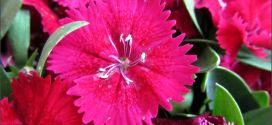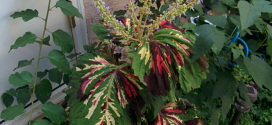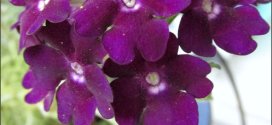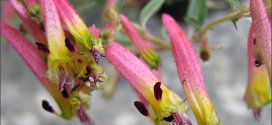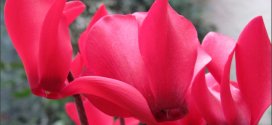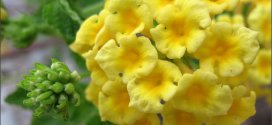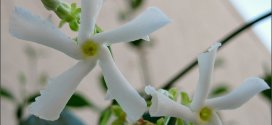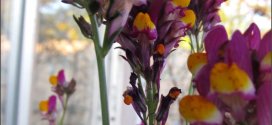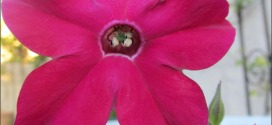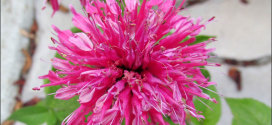The name Dianthus is from the Greek words dios (“god”) and anthos (“flower”), and was cited by the Greek botanist Theophrastus. The color pink may be named after the flower, coming from the frilled edge of the flowers: the verb “pink” dates from the 14th century and means “to decorate with a perforated or punched pattern”. Ecology: Dianthus species are …
Read More »Flowers
Coleus
Coleus is a pretty foliage plant , Solenostemon scutellarioides Family: Lamiaceae (lay-mee-AY-see-ee) (Info) Genus: Solenostemon (sol-en-oh-STEM-on) (Info) Species: scutellarioides (skew-tell-ar-ee-OH-ih-deez) (Info) Synonym:Coleus blumei Synonym:Coleus scutellarioides Category: Annuals Tropicals and Tender Perennials Height: 12-18 in. (30-45 cm) 18-24 in. (45-60 cm) Spacing: 9-12 in. (22-30 cm) Hardiness: USDA Zone 9a: to -6.6 °C (20 °F) …
Read More »Verbena
Rose Verbena, Purple Verbena, Homestead Verbena, Glandularia canadensis Family: Verbenaceae (ver-be-NAY-see-ee) (Info) Genus: Glandularia (glan-doo-LAIR-ee-uh) (Info) Species: canadensis (ka-na-DEN-sis) (Info) Cultivar: ? Synonym:Glandularia drummondii Synonym:Glandularia lambertii Synonym:Verbena canadensis Synonym:Verbena lambertii Synonym:Verbena x ? Category: Perennials Height: 6-12 in. (15-30 cm) Spacing: 6-9 in. (15-22 cm) 18-24 in. (45-60 cm) 24-36 in. (60-90 cm) 36-48 in. (90-120 cm) …
Read More »Cuphea cynea
Black eyed Cuphea, Tri-coloured Cuphea, Cuphea cyanea. Cuphea is attractive to bees and hummingbirds. Family: Lythraceae (ly-THRAY-see-ee) (Info) Genus: Cuphea (KYOO-fee-uh) (Info) Species: cyanea (sy-AN-ee-uh) (Info) Category: Shrubs, Tropicals and Tender Perennials Height: 24-36 in. (60-90 cm) Spacing: 36-48 in. (90-120 cm) Hardiness: USDA Zone 9a: to -6.6 °C (20 °F) USDA Zone 9b: to …
Read More »Cyclamen
Cyclamen is a great winter-flowering plant that loves light shade. You can grow in indoors or out. The red cyclamen is classic for the winter holidays. In the summer, the foliage dies back and it is stressed by reflected heat (so shade is important).
Read More »Lantana
Lantana is a great landscape plant. It attracts bees, butterflies, and hummingbirds. It is very drought-tolerant once established. Every winter I cut it back to its stumps; every autumn the plant has grown 12 feet wide. Obviously, you can prune it smaller.
Read More »Star Jasmine
Star Jasmine has a wonderful scent in the evening. Our Star Jasmine plants grow in a 24-inch wide trench on the side of the driveway. They get afternoon sun. They handle drought. They handle no fertilizers. They are 40 years old. I have to keep pruning them to prevent them from growing up the wall. Like all jasmines (Star, Chilean, …
Read More »Linaria Reticulata
Long-blooming, scented, drought tolerant & snail & deer resistant, this flamboyant annual from North Africa self-sows too! What more could you want? Butterflies? Yes, butterflies adore it, too! Gobs of bright little scarlet & gold bi-colored “snapdragon” blooms are displayed for months above soft ferny foliage. Cut back after it’s finished blooming & it’ll rebloom quickly & vigorously. To 12” …
Read More »Nicotiana
Gardeners who enjoy growing Nicotiana, enjoy great, fragrant perfume. It’s a flower that is grown for it’s fragrance. Nicotiana attract hummingbirds to their trumpet shaped flowers. Nicotiana plants are easy to grow. Flowers begin to appear and bloom in the early summer. The plant will rebloom all season. Flowers open up in late afternoon, and are on fragrant display all …
Read More »Bee Balm
Try growing bee balm in view of a window so you won’t miss the acrobatics of hummingbirds that visit in summer. Bee balm also attracts butterflies and bees.
Read More »